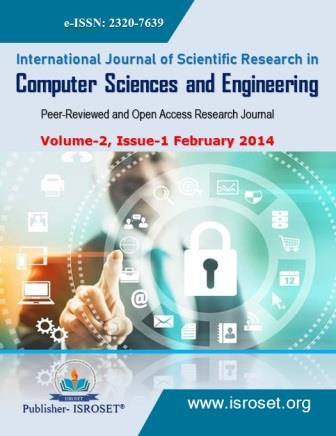Quantitative analysis of Epileptic EEG signals- An Information Theoretic Approach
Keywords:
Computational Neurosciences, Information Theory, Electroencephalogram, EpilepsyAbstract
Computational neuroscience is a new area of research which deals with neuron responses carrying stimulus for a particular process. Different approaches and researches had applied frameworks, measures & techniques to know & analyze the fundamental understanding of the process. Defining information in a quantitative manner is the major constraint for researchers. Information measure is the only way which can give some inside into the complex world of neuroscience as these stimulus or spikes generated are random in nature & many times lead to chaotic behavior. Any such study/model/framework will be of high interest which can be able to bring some facet about the process.
References
Shannon CE: A mathematical theory of communication. Bell System Tech J 1948, 27:379-423; 623-656. (Reprinted in Claude Elwood Shannon: Collected Papers. Edited by Sloane NJA and Wyner AD. New York: IEEE Press; 1993. Also available at http://cm.bell- labs.com/cm/ ms/what/ shannonday/paper.html).
Pamela Reinagel, “Information theory in the brain”, Current Biology, Vol.10, No.15,1997.
Alexander Borst and Frederic E. Theunissen, “Information theory and neural coding”, Nature Neuroscience, volume 2, no.11, November 1999.
S. P. Strong,Roland Koberle, Rob R. de Ruyter van Steveninck, and William Bialek, “Entropy and Information in Neural Spike Trains”,physical review letter,Volume 80, No.1,1998.
Brian Nils Lundstorm and Adriennne L. Fairhall “Decoding Stimulus Variance from a Distributional Neural Code of Interspike Intervals”, The Journal of Neuroscience, August 30, 2006, Vol.26, No.35, PP 9030-9037.
Kazuyuki Samejima and Kenji Doya , ”Estimating Interval Variables of a Decision Maker’s Brain: A Model-Based Approach for Neuroscience” ICONIP 2007, PART I, LNCS 4984,PP. 596-603, 2008.
Alexander G. Dimitrov, Aurel A. Lazar and Jonathan D. Victor, “Information theory in neuroscience” Journal of Computational Neuroscience (2011) 30:1–5.
Dimitrov, A. G., & Miller, J. P. ,“ Neural coding and decoding: Communication channels and quantization” Network: Computation in Neural Systems, 12, 441–472 (2001).
Kennel, M., Shlens, J., Abarbanel, H., & Chichilnisky, “Estimating entropy rates with bayesian confidence” E. J.(2005) intervals Neural Computation, 17, 1531–1576.
Paninski,L, “Estimation of entropy and mutual information”, Neural Computation, 15,1191–1253(2003).
P Grassberger,”Entropy estimates from insufficient samples”, E-print physics/0307138, July 2003.
I Nemenman, “Information Theory and Learning: A Physical Approach “ Ph.D thesis, Princeton University, Department of Physics, 2000.
F. Rieke, D. Warland, R. R. de Ruyter van Steveninck,and W. Bialek, “Spikes: Exploring the Neural Code “(MIT Press, Cambridge, 1997).
Downloads
Published
How to Cite
Issue
Section
License

This work is licensed under a Creative Commons Attribution 4.0 International License.
Authors contributing to this journal agree to publish their articles under the Creative Commons Attribution 4.0 International License, allowing third parties to share their work (copy, distribute, transmit) and to adapt it, under the condition that the authors are given credit and that in the event of reuse or distribution, the terms of this license are made clear.







